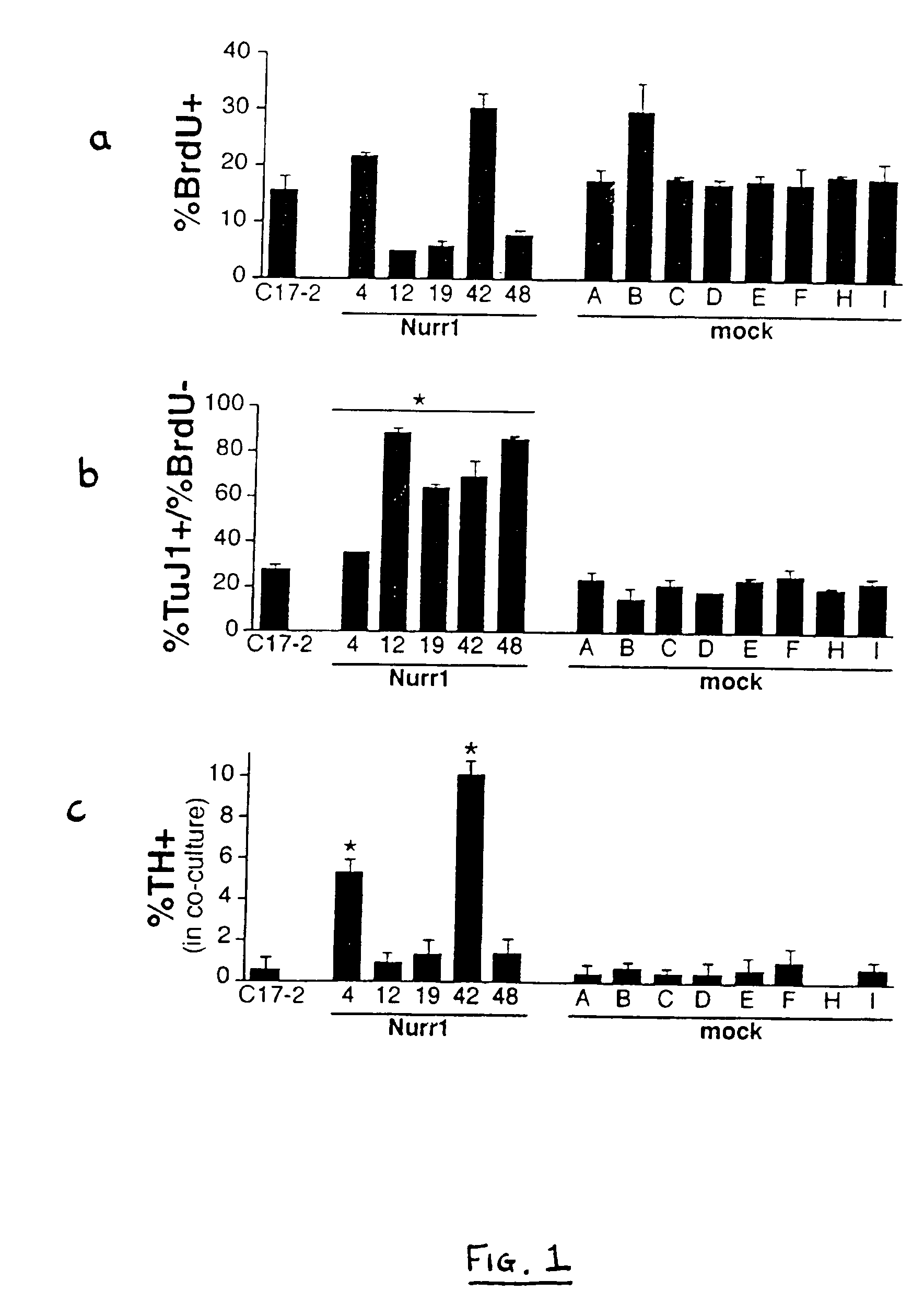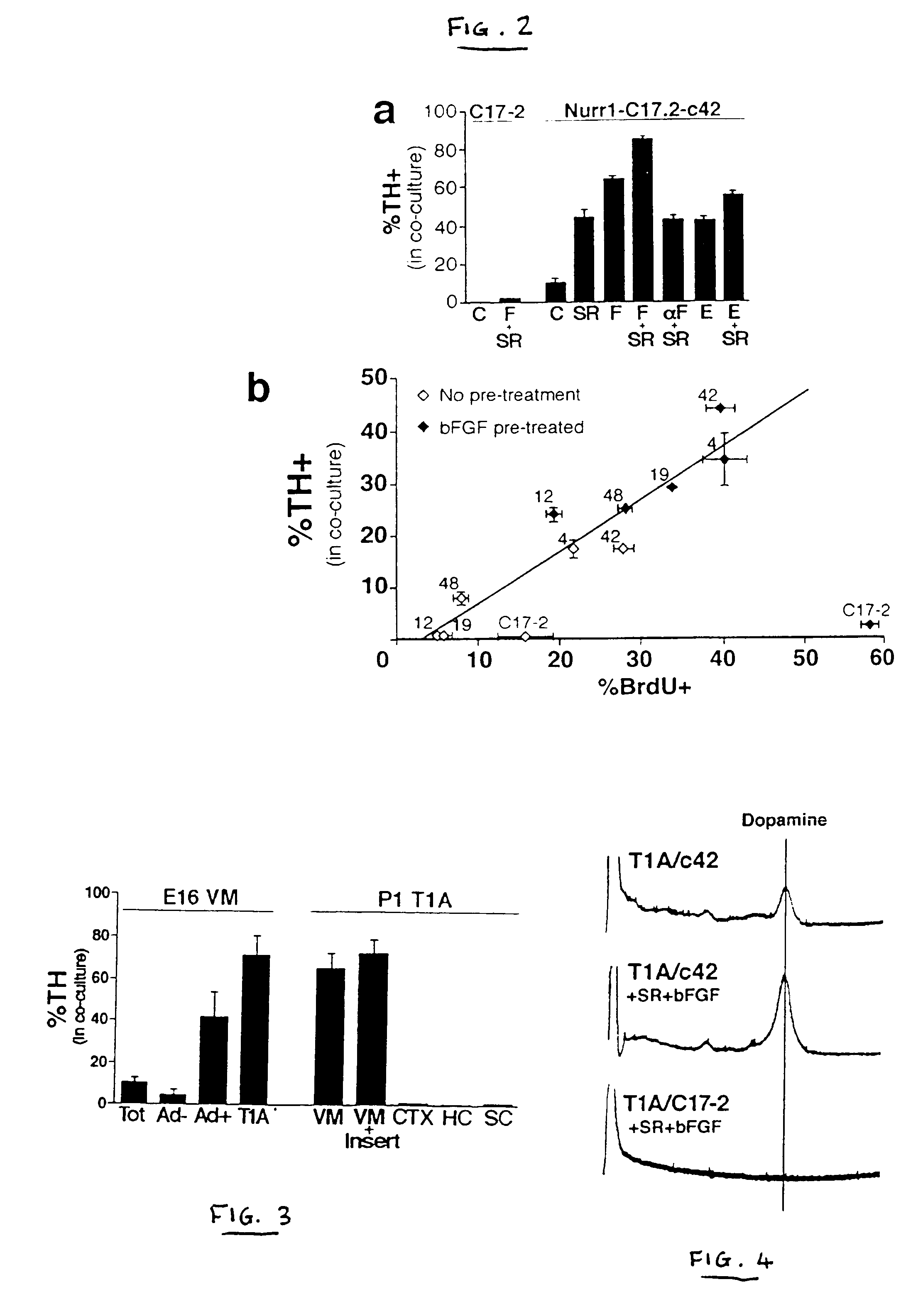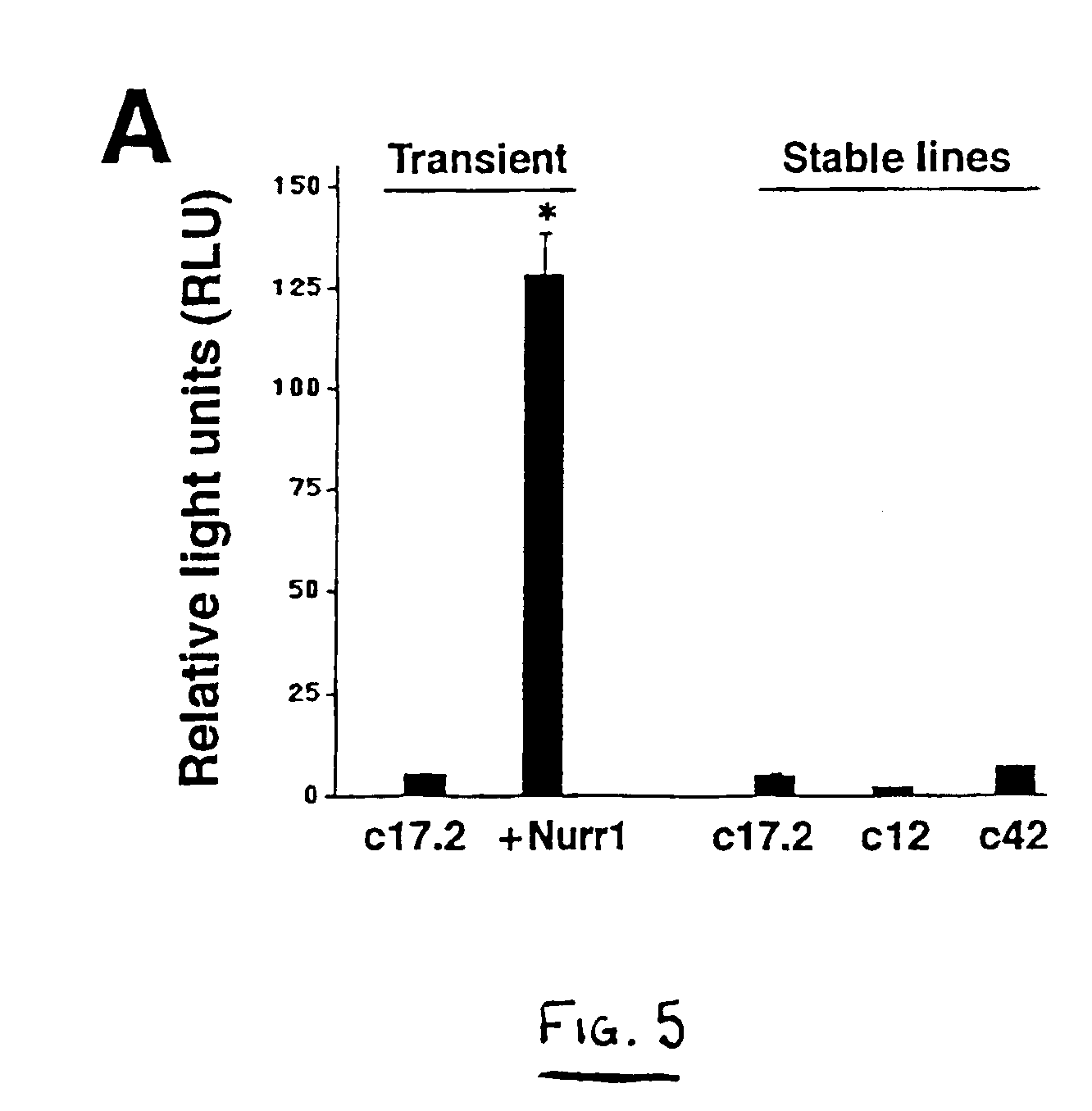Nurr-1 induction of a dopaminergic neuronal fate in a neural stem cell or neural progenitor cell in vitro
a neural stem cell or neural progenitor cell technology, applied in the field of induction of the dopaminergic neuronal phenotype in the midbrain, can solve the problems of limited viability of implanted embryonic cells and are often rejected
- Summary
- Abstract
- Description
- Claims
- Application Information
AI Technical Summary
Benefits of technology
Problems solved by technology
Method used
Image
Examples
Embodiment Construction
Methods
Nurr1-Over-Expressing Cell Lines
[0104]C17.2 cells were cotransfected with a CMX-Nurr1 expression vector (Perlmann, T. et al. Genes Dev. 9, 769-782 (1995)) and PGK-puromycin resistance plasmids (Nurr1 clones) or a PGK-puromycin alone (mock clones). For reporter assays, C17.2 parental cells were transfected with the Nurr1 expression vector, the reporter plasmid (NGFIB-binding response element (NBRE) triplet upstream of TK minimal promoter fused to firefly luciferase) and a pRSV-alkaline phosphatase plasmid at a 2:1:2 ratio.
[0105]Fifty Nurr1 transfected clones were selected for puromycin resistance, isolated, amplified and Nurr1 mRNA expression was analyzed by RNase protection assay (RPA). Assays were performed using the RPAII Ribonuclease Protection Assay Kit (Ambion), following the manufacturers, recommendations. A 288 bp antisense Nurr1 cRNA probe spanning nucleotides 1798-2086 of the mouse Nurr1 cDNA sequence (Law, S. W. et al. Mol. Endocrinol. 6, 2129-2135 (1992)) was trans...
PUM
| Property | Measurement | Unit |
|---|---|---|
| pH | aaaaa | aaaaa |
| pH | aaaaa | aaaaa |
| density | aaaaa | aaaaa |
Abstract
Description
Claims
Application Information
 Login to View More
Login to View More - R&D
- Intellectual Property
- Life Sciences
- Materials
- Tech Scout
- Unparalleled Data Quality
- Higher Quality Content
- 60% Fewer Hallucinations
Browse by: Latest US Patents, China's latest patents, Technical Efficacy Thesaurus, Application Domain, Technology Topic, Popular Technical Reports.
© 2025 PatSnap. All rights reserved.Legal|Privacy policy|Modern Slavery Act Transparency Statement|Sitemap|About US| Contact US: help@patsnap.com



